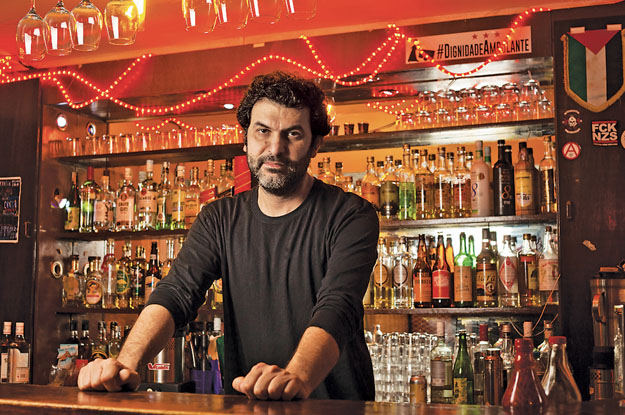This article is adapted from AQ’s print issue on transparency and the 2018 elections
Today it’s almost as common to see a paulistano strolling down the street with a falafel sandwich as it is to see one chowing down on pastel or pão de queijo.
Part of the reason is an influx of refugees and immigrants from around the world who have, in recent years, made São Paulo their home. In the process, they’ve broadened the cultural horizons of one of South America’s true culinary capitals.
Between 2010 and 2015, the number of asylum requests in Brazil rose by 2,868 percent . Some 9,000 people from 79 countries were granted entry, including 2,300 Syrians; many of those who arrived in São Paulo have helped solidify Middle Eastern food as a staple of the paulistano diet.
Al Janiah is perhaps the city’s most well-known Middle Eastern restaurant. Owned by 43-year-old Brazilian-Palestinian Hasan Zarif, Al Janiah has grown from a 10-table dinette when it opened in 2016 to a two-story building with seating for 180 people today. The restaurant doubles as a nightclub, with a stage for live music, a dance floor, and open-air seating. In 2017 it was selected by Brazil’s most widely read newspaper, Folha de S. Paulo, as the best restaurant in the new “immigrant cuisine” category.
São Paulo’s multicultural culinary offerings don’t stop there. Thirty-thousand Haitians were accepted in Brazil following the 2010 earthquake, and, though not as common as Middle Eastern food, Haitian cooking has also found a home in the city. Most Haitian restaurants are concentrated in neighborhoods like Glicério in the city’s central zone (a rougher part of São Paulo best visited during the day). Bonjour Brasil is a highlight. Opened in 2016 by 36-year-old Jean René Veillard, the restaurant offers a daily all-you-can-eat buffet with spicy traditional homemade delicacies.
There is also cuisine from Africa. Congolese refugee Pitchou Luambo fled armed conflicts in 2010, and in 2016 opened a stand at a posh Itaim Bibi open-air food court. In September he opened his own restaurant, Congolinária, in the Sumaré neighborhood. It’s become a favorite among vegetarians, not least because of vegetable-based specialties like ngombe (plantain gnocchi in shimeji sauce).
The best-known African restaurant in town is still Biyou’Z, opened in Campos Elísios (Portuguese for Champs-Élysées) in 2008 by 43-year-old Melanito Biyouha, who came from Cameroon first as a tourist and decided to move to Brazil with an immigrant visa. The restaurant initially served the local African community, but gained wider popularity after it was discovered by Cameroonian soccer fans during the 2014 World Cup. Biyou’Z serves traditional dishes like fumbua, cooked with shrimp, roasted peanuts and palm oil, and served over chicken or manioc.
São Paulo has long been a good food city. Thanks to an influx of new flavors, it’s quickly becoming a great one.
—
Messias is a journalist based in São Paulo





